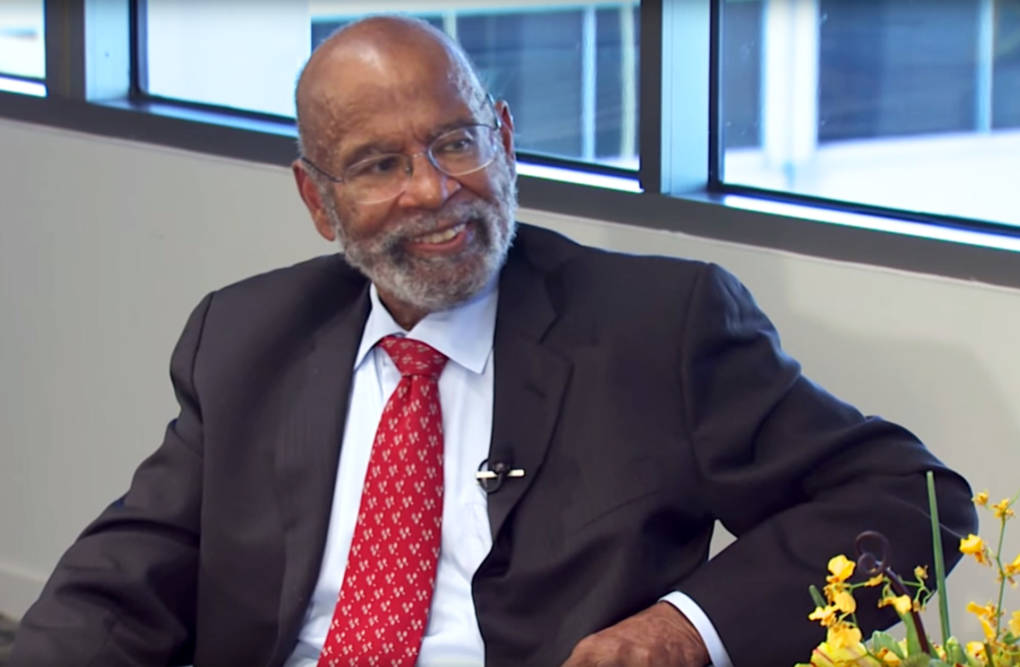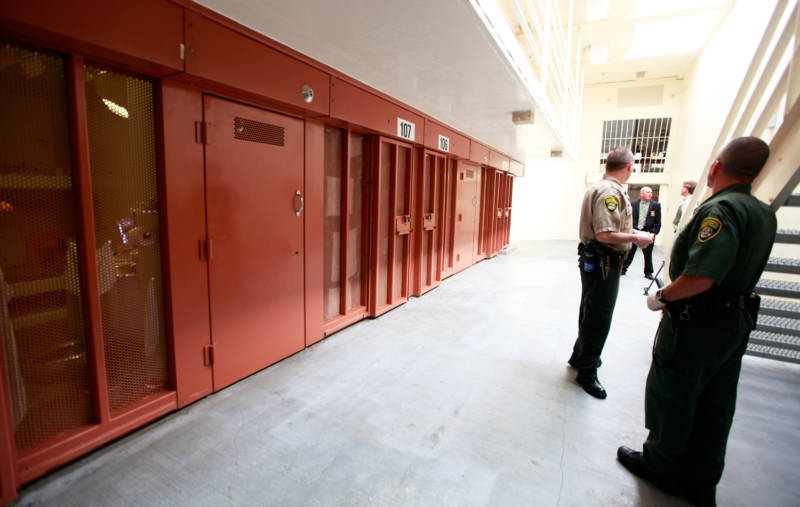The California Report
August 11, 2017
By Scott Shafer
 U.S. District Court Judge Thelton Henderson, who retires August 11, 2017
U.S. District Court Judge Thelton Henderson, who retires August 11, 2017
"Everybody gets their day in court, but my passion is for the underdog. That’s where I put in my extra time.’
-Judge Thelton Henderson
After serving 37 years on the federal district court bench in San Francisco, where some of his decisions involved hot-button issues, Judge Thelton Henderson is retiring today.
His rulings often enraged opponents and thrilled those who agreed — often attorneys for “the little guy.”
Henderson was born in Louisiana in 1933. But he grew up in South Central Los Angeles, where he first witnessed the impact of segregation and discrimination.
After graduating from UC Berkeley’s law school, Henderson’s legal career got off to a bumpy start.
In 1962, he became the first African-American to work in the U.S. Justice Department’s Civil Rights Division. He was sent to the South, where racial tensions were boiling over. One night he loaned his government car to the Rev. Martin Luther King, whose own car had broken down. Attorney General Robert Kennedy — worried about how it would look to Southern Democrats — gave Henderson little option but to quit.
“(I was told) I couldn’t be sent out in the field any longer, that I’d have a desk job and that it would be best if I resigned. So I resigned,” Henderson told KQED. “But I was effectively fired. I can say that now after all these years.”
Henderson landed on his feet — working in academia and helping to diversify law schools. In 1980, President Jimmy Carter nominated him to the federal bench.
Of the hundreds, if not thousands, of cases he’s handled, Henderson says none was more important than his finding that overcrowding in California prisons contributed to terrible health care for inmates.
“One prisoner was dying every six days for lack of adequate medical care,” Henderson recalls. “That’s a lot of lives. That’s no longer happening.”
In 2006, he took control of prison health care away from the state and turned it over to an independent health care czar, forcing California to spend hundreds of millions of dollars to improve care. Gov. Arnold Schwarzenegger fought the decision but it was eventually upheld by the U.S. Supreme Court. It led to the forced reduction of the state prison population.
“Most of the prisons now are pretty close to the level of care that we get out here outside of prison, so it’s a profound change,” Henderson says. He still visits San Quentin Prison to check on conditions there, and he says inmates still come up to him and thank him for what he did.
 Guards outside the solitary confinement facilities, known as the Security Housing Unit, at Pelican Bay State Prison.
Guards outside the solitary confinement facilities, known as the Security Housing Unit, at Pelican Bay State Prison.
Donald Specter, executive director of the Prison Law Office in Berkeley, was one of the attorneys representing inmates. A decade earlier, he also went with Henderson to see firsthand the solitary confinement facilities at the notorious Pelican Bay State Prison in Del Norte County.
After a three-month trial in 1995, Henderson issued a 300-page ruling that completely changed conditions in the prisons.
“The beatings stopped,” says Specter. “Prisoners who were especially vulnerable to isolation were kept out of it. His ruling was responsible in large part for reforming the use-of-force policy for the entire corrections department. So it was dramatic."
Over the years Henderson has had his share of reversals by higher courts, none more infamous that a case involving affirmative action.
Surprisingly, when I asked Henderson to name the cases he’s most proud of, he mentioned his ruling that tuna fishermen could no longer use nets that were killing huge numbers of dolphins. Henderson says he still gets letters from schoolkids about that one.
But he got very different kinds of letters after California voters passed Proposition 209, banning racial preferences in public institutions like the University of California. In November 1996, Henderson blocked its implementation — enraging supporters of the measure.
Proposition 209 backer Ward Connerly called Henderson’s ruling “the most garbage decision I have ever seen,” adding that it “will be recorded in the history of American jurisprudence as one of the most perverse.”
Some Republicans called for Henderson’s impeachment.
Republican Gov. Pete Wilson called Henderson’s decision “an affront to the overwhelming majority of California voters.”
“I got death threats for that case,” Henderson recalls. “I’ve had a few since then, but that one was the most emotional case.”
Henderson’s Proposition 209 decision was overturned by a three-judge panel of the 9th U.S. Circuit Court of Appeals a few months later, and the law remains in effect today.
Even today, 20 years after his decision, Henderson is convinced he did the right thing by blocking Proposition 209 from taking effect.
“I felt I was following Supreme Court precedent,” Henderson says. “Of course the panel that got it on the 9th Circuit disagreed. I was never convinced I was wrong.”
Cases like Proposition 209 led critics of Henderson to label him an “activist judge.” He rejects that but acknowledges that he’s always tried to level the playing field.
“Everybody gets their day in court, but my passion is for the underdog,” Henderson admits. “That’s where I put in my extra time.”
Now 83, he’ll have extra time for his two passions — fishing and poker.

